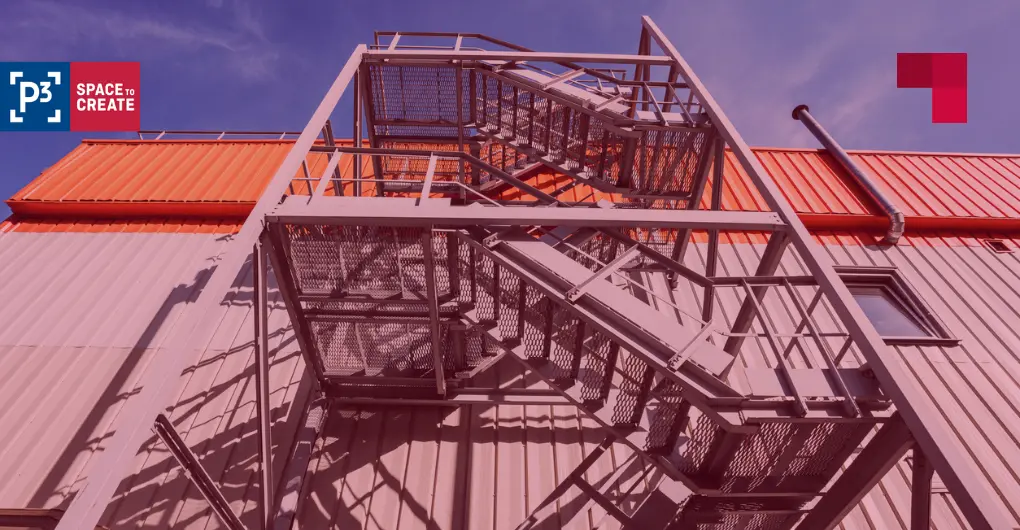

A shortage of space and high property prices are constant challenges in modern logistics. Multi-storey logistics centres offer an attractive solution. How these can be built in the most sustainable and efficient way is shown by P3’s newly developed logistics centres in Italy, one of which has been awarded the BREEAM certification of “Excellent”.
Anyone in logistics must deal with a lack of space, with e-commerce booming and taking up more and more room. In 2021, take-up of space for industrial and logistics properties in Germany reached a record high of almost three million square metres. This was reflected in rents, which rose by an average of just under eight percent.
Proximity to cities is also gaining in importance. More reliability, more flexibility and, above all, more speed – these are what today's online retail customers demand. The logistics sector and retail companies can meet these demands with more distribution centres located within the ‘last mile’ from shoppers’ homes, but the amount of available space is shrinking. To combat this, a change of perspective is necessary.
Different countries, different construction methods
A prime example of how well multi-storey logistics centres can work is the Asian market, where logistics towers have long been indispensable and can reach more than 20 storeys high in some cases, but still blend seamlessly into the cityscape. A recent survey by the real estate service provider CBRE, revealed that more than half of almost 100 high-ranking decision-makers expect their building requirements to change in future, towards multi-storey facilities which increase efficiency and handling capacity.
The higher, the more challenging
At some stage, a point is reached where going vertical is more profitable than going horizontal; not only in terms of financing, but also in terms of the property’s sustainability. With vertical construction, real estate takes up less ground space and therefore responds to the increasing sealing of natural areas.
A prime example of this is the multi-storey distribution centre developed by P3 in Castelguglielmo, Italy. The approximately 190,000 m2 property located near Venice, has four floors and holds the BREEAM certification, “Very Good,” through the implementation of appropriate sustainability measures. Elsewhere, an ambitious project by P3 is a distribution centre in San Salvo, Italy, also four storeys high, which has received the BREEAM certification of “Excellent”.
However, with height comes challenges. A new construction method and therefore a technical rethink are required. This particularly refers to the clear height and the ceiling load associated with multiple storeys. Ramps also need to be considered in a completely new way, in order for loading vehicles to comfortably reach every storey. In some designs, ramps curl over each floor like a snail shell, while in others, they are more discrete inclines on the sides of the building.
Innovation means change
The stages of land transfer, as well as the lengthy process of approval and legal procedures, and the design of the building are – literally – the foundation of high-quality multi-storey logistics. Planners must pay special attention to compliance with fire safety regulations. Due to the multi-storey design, sufficient escape routes and an emergency system must be guaranteed.
The building's energy efficiency is also of great importance. New multi-storey properties by P3 are designed by experts to avoid unnecessary energy consumption, with heating, ventilation and air conditioning systems which can be controlled across all floors by an intelligent building management system. Solar panels on roofs and access to charging stations for electric vehicles also contribute to energy efficiency.
However, all these aspects require an increased volume of investment, which deters many investors and developers during the planning process. But this does not have to be the case, as high sustainability standards have proven themselves, economically. Additionally, biodiversity is considered just as much as efficiency, making multi-storey logistics an investment in the future from an ecological point of view, as well as an economic one.
Logistics skylines
So, can we soon expect to see skylines of logistics properties in Europe? Only time will tell. There is no doubt that the construction of single-storey logistics properties will continue to dominate strongly in the coming years. There is nothing wrong with this, for example regarding the development of brownfields, or the rising sustainability standards of such properties. Responsible developers are already building for the future, so these properties will last for many years. But space is always limited. At some point, building to height is no longer an option, it becomes a necessity.
At the same time, height is a necessity with many benefits. Ironically, one advantage that is often overlooked is the high visibility of a tall property. Its large facade offers optimal space for promotion, not simply as a surface for placard advertising, but as a showcase for forward-thinking design and innovation, as with skyscrapers. At the same time, multi-storey properties enable a more efficient and sustainable flow of goods. For these reasons, we may well see urban skylines of logistics real estate, in future.